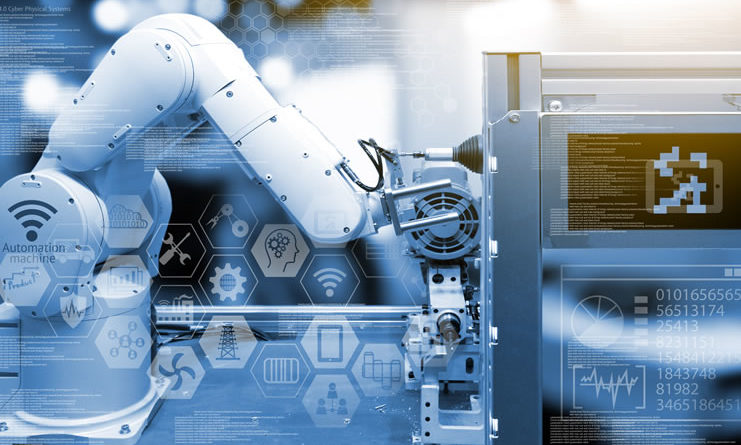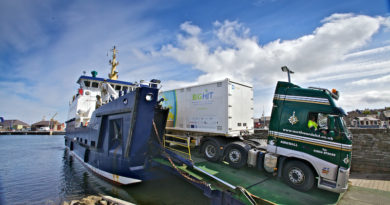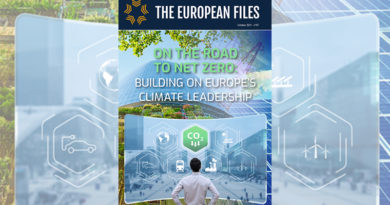
The right moment is NOW: Why and how to develop a European industrial policy strategy
In June 2017, 20 European Ministers of Industry attending the Fifth “Friends of Industry” Ministerial Conference signed the Berlin Declaration, which states that: “What we need is a kind of “Pulse of Europe: Industry edition”, an impetus that will enable us to beef up our economies’ capacity to innovate, enhance our future prosperity and create good jobs within the European Union.” This was just one of many appeals made by EU Member States for industrial policy to be given particular consideration and for plans designed around industry to be drawn up in a European context.
Two years later, in February 2019, I endeavoured to provide this kind of impetus for Germany and also for Europe by tabling a National Industrial Strategy for 2030 (NaIS).
The NaIS has attracted a lot of response. I have received positive responses, criticism and questions from Germany, Europe, and countries that are further afield.
The enormous level of interest has shown me that there are many who feel that something needs to be done, but that there is a dissent about what the pathway towards a modern industrial policy should look like.
We are all agreed, however, that actually producing goods comes with positive economic effects.
The time has come for an industrial renaissance in Europe and the right moment for that as the various different stakeholders in the industrial community unequivocally agree is NOW:
– NOW, in the run-up to the European elections, is the time for us to position ourselves clearly, so that the new European Commission will have a clear understanding of the need for reform.
The industrial sector continues to be part of the indispensible core of our economy. This means that it must also play a part in all that will ensure that Europe continues to thrive and prosper.
Any reform must always begin with a clear assessment as to where the European Union stands with regard to international competition.
For this reason, the Monitoring Dashboard for measuring the competitiveness of European industry, which was developed under the Austrian presidency, is an essential requirement for any analysis, and it will provide key pieces of information on investment activities, global market shares, the industrial share of GDP, and also the number of innovations in small and medium-sized companies (SMEs), of working robots, of industrial workers receiving continuing training, and information about the extent to which the industrial sector has harnessed digitisation.
These insights will then allow us to devise bespoke solutions for our industrial policy. In a next important step, the new European Commission is asked to take account of the economic importance of the industrial sector and of the general need for industrial policy action by tabling its ideas on how to safeguard and strengthen the competitiveness of European industry by tabling a long-term industrial strategy by the end of 2019.
The European Council is also asking for this to happen. The industrial strategy must have a focus on how to bring up investment levels, usher in the transition of the industrial sector into the digital age, strengthen innovation, promote and foster key-enabling technologies, safeguard strategic value chains, and protect the industrial sector from unfair international competition.
– NOW is the time for reviving the meaningful momentum of a joint European industrial strategy.
There are some in Europe who are calling our economic union and our union of values into question. To my mind, the industrial sector is part this continent’s ‘joint cultural heritage’. Every day, the economies of EU Member States are becoming more and more intertwined as cross-border value chains in the industrial sector are being forged. This is something we want to use as a major
economic argument opposing those criticising Europe: more than almost any other industry, the European industrial sector is proof of the intricate network formed by small, medium- sized and large industrial enterprises whose trade is closely interwoven across the European continent.
It is a ecosystem formed by innovative industrial companies over centuries, and one that has no equivalent elsewhere in the world.
– NOW is the time to make a concerted effort to create what we call ‘European champions’.
A ‘champion’ by this definition is a company of any size that is able to compete internationally and to actively drive technological progress.
If we want to activate, support and protect our existing and future European champions, we need to find a well-focused and thought-through European response to government intervention and protectionism.
Part of this response is to strengthen strategic value chains in Europe. Two ‘Important projects of common European interest’ (IPCEIs) have already been launched respectively initiated in the fields of microelectronics and battery cell production.
In the case of the IPCEI microelectronics, four European states have invested in forward-looking innovations, thus acting in the wider economic interest. I am confident that we will be able to also get the IPCEI battery cell production up and running, together with partners in Europe. Our invitation to apply for funding under the IPCEI battery cell production has met with a lot of interest.
The initial talks we have had suggest that we can be optimistic. Whilst we approve of the procedure in general, in particular with regard to its objective of safeguarding technological leadership, we must bear in mind that processes have yet to be considerably sped up.
I can see a great deal of potential here and am closely following the work of the ‘strategic forum’, which has identified another six value chains that are of strategic importance and for which the forum seeks to get additional pan-European projects on key-enabling technologies off the ground.
– NOW is the time to safeguard and strengthen Europe’s technological leadership.
It was technological prowess and leadership that made Europe strong in the past the same things that will continue to give us a decisive competitive edge in the future.
Technology is the dominant force driving structural change.
We talk about ‘game-changers’ such as artificial intelligence, automated and connected driving, or nano and biotechnologies. We talk about Industrie 4.0, the use of new materials, about innovative medical technology and medical products.
They all have the potential to revolutionise industrial companies and entire industries. They are transforming our value chains and turn industrial processes upside down. To harness these technologies means to secure long-term economic growth.
This is why strengthening these technologies and promoting research and development in general is rightly one of the objectives that feature prominently on the list for the next Multiannual Financial Framework.
To my mind it is key that we harness the opportunities for technological leadership, because this will be decisive in our efforts to ensure that future economic output and the jobs of the future will be created here in Europe.
– NOW is the time for a discussion on modernising European competition law. The basic principles underpinning competition law have proved their worth.
However, at a time when the digital revolution is changing the world at breakneck speed, when the platform economy and its logic of ‘the winner takes it all’ are embedding themselves firmly in our economy, we must review our existing regulations to see if they are still fit for purpose.
This review of our competition law also becomes necessary as our industrial sector is becoming more and more integrated both at global and at European level.
How are we dealing with state controlled and state subsidised companies from non-EU countries? Do we sufficiently take into account the strategies adopted by countries outside the EU as we consider potential competition?
Our tasks include those of ensuring effective competition and a level playing field in the future.
After all, competition is the most important factor driving innovation. And competition law is key for protecting competition.
– NOW is the time to level the global playing field. In a first step this will require modernising the WTO’s multilateral rulebook, in particular the rules on industrial subsidies and forced technology transfer.
We are currently working with the other EU Member States to see how international rules, for instance rules on public procurement, can help guarantee a level playing field for all.
We are willing to engage in constructive discussions about what could be effective instruments that help promote a mutual opening up of the global public procurement markets.
For me, there can be no doubt that we must continue to work hard on reducing distortion in international competition.
In this context, I expressly welcome the free trade agreements negotiated by the European Union with countries including Canada and Japan.
These FTAs are an important contribution to the effort of shaping globalisation, for instance by maintaining high levels of consumer protection, labour and environmental standards.
– NOW is the time for future-proofing the European industrial sector: there are economies that over the past few years have neglected their industrial contributions to GDP and have had to learn some hard and painful lessons. Once technologies and jobs have moved abroad, they will not come back by themselves.
But in Europe, our industrial core is indispensible for the success of our social model. I am firmly convinced that a flourishing industrial sector has the right to remain and to stay part of our diversified overall economic model.
Its economic relevance, its impact on our society and economy, and its unfettered innovative nature that always looks to the future make the industrial sector more ‘hip’ than it has ever been.
The time has come and the moment is NOW. Many of the developments we have seen in recent years and the last few decades have raised some essential questions about the viability of our European industrial sector and of the prospects of the entire European continent and the economic model it represents.
Let us seize this opportunity, let us safeguard our technological sovereignty, let us improve our business environment for industry, let us level the playing field, let us embody the social market economy and pave the way for a sustainable future for industry. I am looking forward to us doing just that.




